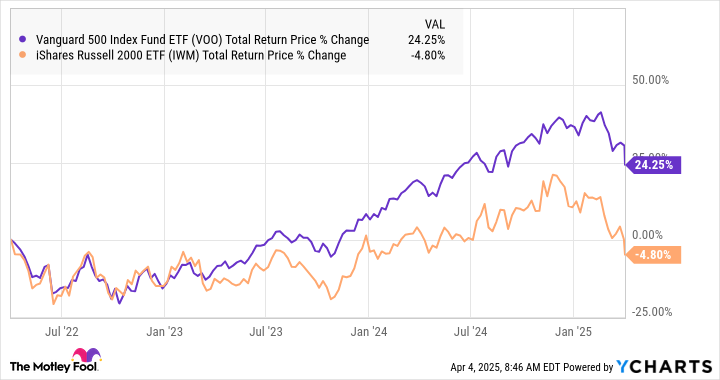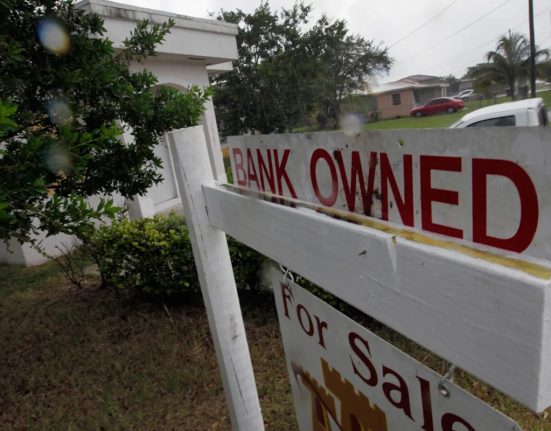It’s no secret that the stock market took a massive nosedive after President Donald Trump revealed his “reciprocal tariff” plans, but there are some areas of the market that took the news worse than others.
In fact, the Russell 2000, which is widely considered to be the most comprehensive index of small-cap stocks, has now officially fallen into bear market territory. The day after the tariff announcement, the index fell to a level that is 22% below its recent high, and the futures markets indicate that it could be substantially lower by the time you’re reading this.
Not only has the Russell 2000 dramatically underperformed the broader stock market, but small-cap stocks were already rather cheap, relative to their large-cap counterparts, entering 2025. Here’s where things stand with the small-cap benchmark right now, and why investing in the Russell 2000 right now could be a great way to set your portfolio up for years of market-beating returns.
Small-cap stocks are trading at the lowest valuations relative to the S&P 500 in decades, and the gap continues to widen.
At the beginning of 2024, Fundstrat analyst Tom Lee correctly pointed out that small caps were trading for their lowest price-to-book multiple relative to large caps since 1999. And since that time, the gap has widened considerably. Last year, the Russell 2000 underperformed the S&P 500 by about 14 percentage points, and it has underperformed by another 6 percentage points already this year.
The gap is a bit mind-boggling. The average S&P 500 component trades for a price-to-earnings ratio of 26.8, and for a price-to-book multiple of 4.8. On the other hand, the average component of the Russell 2000 trades for 17.5 times earnings and for a P/B ratio of just 1.9.
To be fair, large-cap stocks have grown their earnings at a somewhat faster rate in recent years (mainly due to the success of megacap technology stocks). But not by enough to justify a price-to-book valuation that’s about 150% greater.
Lee also pointed out that the last time the gap was so wide, small caps went on to outperform large caps for the next 12 years, and by a total of 113 percentage points above the S&P 500.
Of course, there’s no guarantee that the same thing will happen this time around. But there are good reasons to believe that small caps could be set up to outperform. For example, small-cap stocks tend to benefit more from interest rate cuts, due to typically higher dependence on borrowed money, as well as increased appetite for investor speculation as rates on risk-free investments fall.






